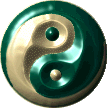 | |||||||||||
|---|---|---|---|---|---|---|---|---|---|---|---|
|
Apart from having the medicinal back up of around 5000 years of research, trial and error etc., the Chineses Practitioner must undertake an extensive diagnostic method, which includes:
The exterior reflects the interior. Since the balance of the whole organism is the basis of the medicine, a useful diagnosis will account for the condition of all parts (and their relationships) of the human being. This requires gathering enough information to understand the context of the person. Listening to both what is said and how it\ís said are also of primary importance. The examination is thus very thorough and includes an extensive interview. In reality there are approximately 10 categories and 100 questions. Based on the 10 Categories below
CHINESE HERBAL MEDICINE A BRIEF HISTORY The period during which the Nei Jing appeared was one of great creativity and change. By 265 BC (when some scholars believe the Nei Jing was published) the transition from a shamanistic medicine to one based on theory and an accumulated body of knowledge was almost complete. Although the Nei Jing was supposed to have been written 2500 years prior it almost exclusively discusses the medicine of theory and accumulated knowledge. So the 28 substances and 12 prescriptions listed in the Nei Jing are the first mention of the Chinese herbal medicine which continues to be practiced now. By 220 AD national and provincial government medical services were established. Professional specialties included prescribing physicians, senior physicians, junior physicians, apprentices and pharmacists. During the Chin Dynasty (265 AD - 420 AD) the Imperial University was established and medicine was part of the curriculum. About 500 AD The Divine Husbandmanís Classic of the Materia Medica was published. This text contained the first references to properties of herbs and the first classification system for herbs other than the Five Element tastes. There were three major categories.
In 659 AD The Newly Revised Materia Medica, the first illustrated text of herbs, containing 844 entries, was published. 1108 AD saw the appearance of the Materia Medica Arranged According to Pattern which had 1558 entries. 1596 AD brought The Grand Materia Medica with 1892 entries. By 1977 5,767 entries were listed in the Encyclopedia of Traditional Chinese Medicinal Substances. |
.